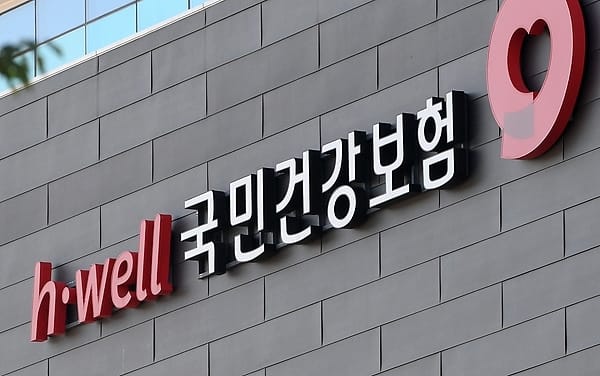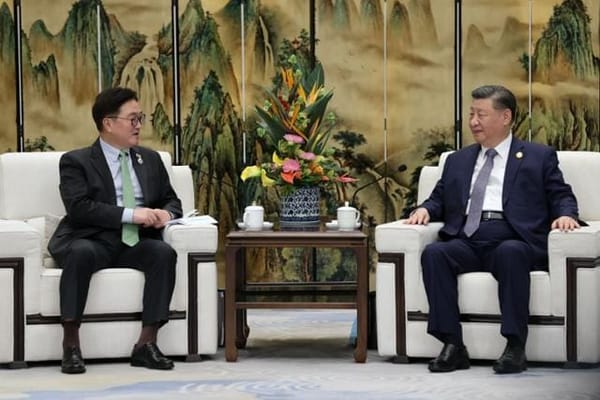Credit: Yonhap News.
On July 5, the Public Prosecutors’ Office 검찰청 announced that it had arrested Ryu Hyeok 류혁, an executive of the Korean Federation of Community Credit Cooperatives, for alleged corruption in making loans to finance construction projects. The next day, the Namyangju, Gyeonggi-do Province 경기도 남양주 co-op branch - more commonly known as the Saemaeul Credit Co-op 새마을금고 - suddenly announced that it would merge with the nearby Hwado 화도 branch, as the Namyangju branch could no longer service the KRW 60b (USD 46.2m) in construction bonds.
With 21m customers and KRW 25t (USD 19.2b) in assets, the Saemauel Credit Co-op is an unusual type of bank in South Korea. The bank began in 1973 as a government-established co-operative for small local governments, similar to credit unions in the United States. Other South Korean credit co-ops include the National Agricultural Cooperative Federation, more commonly known as Nonghyup 농협, and the National Federation of Fisheries Cooperatives, more commonly known as Suhyup 수협.
Because these financial institutions are technically government organs, each created by statute, they are not subject to supervision by the Financial Supervisory Service 금융감독원 as other banks are. Instead, the Saemaeul Co-op is supervised by the Ministry of Interior and Safety 행정안전부, which is entirely unequipped to oversee complex financial transactions. The same is true of Nonghyup and its supervisory agency, the Ministry of Agriculture, Food and Rural Affairs 농림축산식품부, and of Suhyup and its supervisor Ministry of Oceans and Fisheries 해양수산부.
The sudden announcement of the merger caused a panic among the co-op’s customers, who lined up outside the bank to withdraw their deposits. But the Interior Ministry was unprepared to handle a bank run: Interior Minister Lee Sang-min 이상민 is currently suspended pending impeachment for the poor response to the October 2022 Itaewon Disaster, in which 159 people died. Vice Minister Han Chang-seop 한창섭 attempted to assuage public concerns in a press conference on July 6, but was unable to respond in depth to any questions about how bank customers could protect their deposits.
In recent days, the Saemaeul Co-Op has seen an alarming increase in delinquent loans. South Korea’s project financing market has been in a deep freeze since the September 2022 Legoland Bond Crisis 레고랜드 사태, in which conservative Governor Kim Jin-tae of Gangwon-do Province 김진태 강원도지사 declared a moratorium on government bonds issued to subsidize construction of the theme park. (See previous coverage, “Legoland Crisis Levels the Bond Market.”) Although Kim hastily reversed course, the move shook confidence in South Korea’s capital market, pushing marginal borrowers to seek lenders with looser standards.
Enter the credit co-ops. As of June 29, the delinquency rate for Saemaeul Co-op was 6.18%, a jump from 3.59% just a month before. More alarmingly, the delinquency rate for corporate loans was 9.63%, and 30 branches of the Co-op had overall loan delinquency rates of 10% or higher. The Interior Ministry initially announced that it would begin a special audit of those 30 branches on July 10, but quickly retracted the announcement when the news of the special audit caused even more customers to withdraw their savings.
The Yoon Suk-yeol 윤석열 administration has been doing its best to calm the panic. Financial Services Commissioner Kim Ju-hyeon 김주현 금융위원장, South Korea’s chief bank regulator, emphasized that deposits in co-ops deposits received the same protection from the Korea Deposit Insurance Corporation 예금보험공사 as deposits in regular banks. Kim also noted that each branch of the Saemaeul Co-op is an independent entity, meaning that the failure of one co-op branch does not affect another branch.
Yet Kim also pledged to protect deposits beyond the KRW 50m (USD 38.5k) limit for deposit insurance, by having failing branches merge with healthy branches as the Namyangju branch did - a movethat would cancel out the supposed protection of having each branch being a separate entity. The regulators also declined to disclose the names of the 30 Saemaeul Co-op branches with the worst delinquency rates, stoking anxiety among customers of the co-op that their branch may be among those affected.








